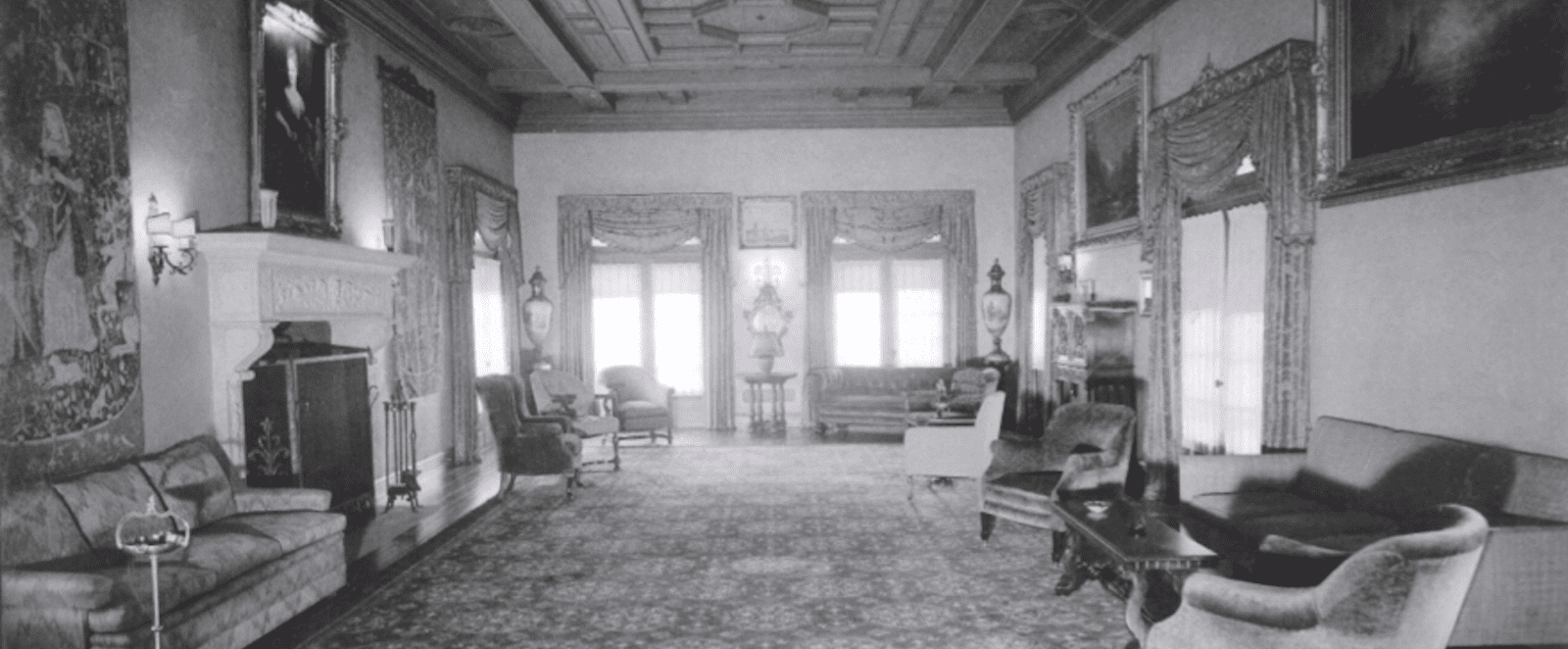

Fact or Fiction: Secrets of the Mansion
The rumors about La Quinta Mansion have been thriving for decades.
Maybe you have heard some of these rumors. If you have ever visited La Quinta Mansion, perhaps on a campus tour or on a late night dare from another student, you were probably encouraged to roam through its various rooms while dutifully listening to your guide’s history lesson of each. And while you happily imagined yourself in an Austen-esque television mini-series about the charmed life of living on such an estate, you may also have been simultaneously assured that wealthy owner H.V. Foster had been a paranoid target of kidnapping for ransom, that a network of secret tunnels were built underground for his escape, and that he hoarded millions in his attic should anyone come to claim his riches.
Let’s clarify some of these stories for the sake of Foster’s legacy. In some cases, the truth may be as strange as fiction. Most likely, the extravagant versions will still live on, though, because how else can one best scare the new freshmen?
TUNNELS
The underground tunnels leading to the garage would certainly have been useful for H.V. in the event of a kidnapping attempt. Except that a single tunnel does not exist underground, much less a network leading throughout the city. There is a tunnel elsewhere on the Oklahoma Wesleyan campus, leading from the cafeteria kitchen to the back of the campus coffee shop for inventory stocking purposes. However, this modern tunnel does not match the story of Foster preparing to tunnel away.
TRAP DOOR
There are said to be a number of sliding panels throughout the Mansion as another insurance for Foster’s escape. One sliding panel does exist, and it stands as a wall in the lower study, located between the Living Room and the Solarium. It leads to a staircase that goes up to the family’s former living quarters. Since there is no route leading out and away from the Mansion, its being built suggests a need for convenience rather than secrecy. In fact, Foster’s granddaughter Ami Preston said, “The staircase…made it much easier to go upstairs, rather than go the long way around. The secret panel was put there as a decorative feature, not an escape hatch.”
ARMED GUARDS
The presence of armed guards with dogs at each entrance of the home has been claimed by many publications, even by the National Registry for Historic Places. However, Ami Preston again shoots that one down, stating, “That isn’t any more true than the rumor that H.V. ‘squirreled’ away millions in a basement vault.”
BASEMENT
Speaking of squirreling, the basement has been said to hold a vault where Foster could keep the majority of his cash and wealth. In fact, a vault did exist, though all of Foster’s cash was not stored there. Mainly his coming from a banking family and being a vice president of Union Bank suggests that it would be counter-intuitive for him to hoard rather than pour back into the bank.
What is the basement used for today, then? Past the Don Quixote room there is an additional side room, used for some minimal storage but mostly for an emergency tornado shelter. With its concrete walls and hall-shape, the students of OKWU have been assured of its use as a shelter in addition to several other campus options. The Bartlesville community has also been welcomed to use any of these shelters should the need arise.
IRON GATES
In addition to everything else, there is also a rather tame rumor of barred gates to seal off the family’s living quarters in case of a kidnapping. In this case, the gates did exist and still stand today. One gate stands in the upstairs hallway leading to Marie’s and Mr. and Mrs. Foster’s bedrooms. Another similar gate stood by the hallway of the guest bedrooms. The gates are made of wrought iron decorative vines and foliage, and stands prettily, though securely. Additionally, some wrought iron gates (painted a light green) are posted at the entrances of the Rose Garden.
—
So then, what does stand true in all of these rumors about the Foster’s home? In fact, kidnapping of wealthy individuals did occur occasionally during this period in American history. The Lindbergh baby kidnapping had left its mark on the public, no matter the class. Thus, families or individuals who stood out for their prosperity understood there was a potential for kidnapping for ransom. Yet, family members claim that H.V. was not preoccupied with the notion by any means, and merely had a plan if something like it should happen.
Thus, with a much fairer view of the man, those of us appreciating Foster’s legacy will have to agree that he was prepared for unfortunate events, but not an eccentric or a recluse. Rather, Foster was a generous man who cared about education. It makes sense then, that his family would leave a needed administration building for the campus, rather than a modern fortress.